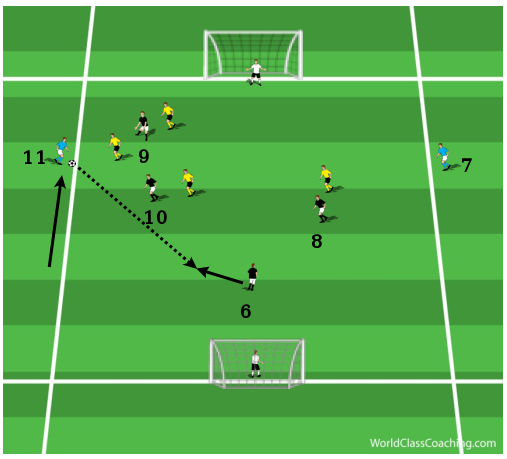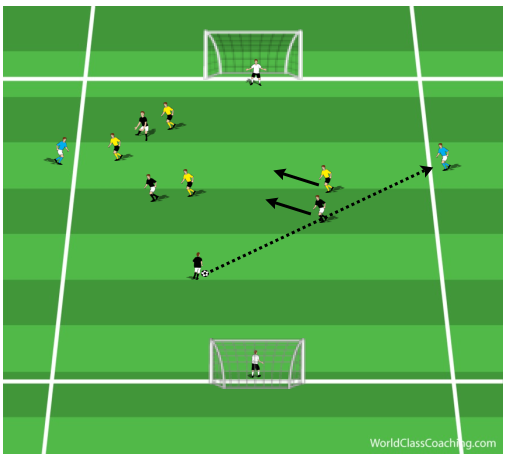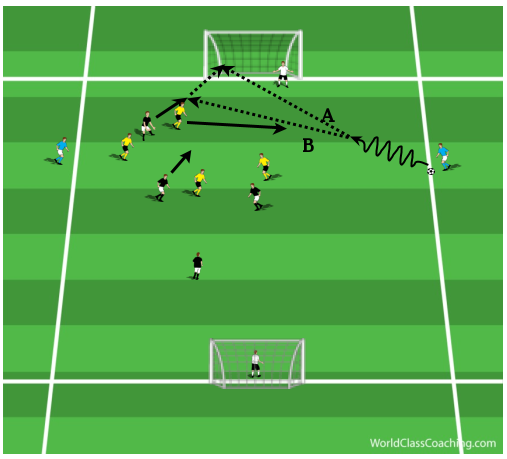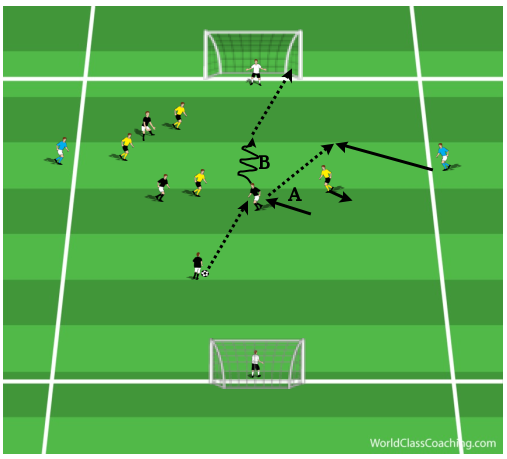By Sean Pearson
Area Size: Central Area: 30 x 40 yards, Channels 5 x 40 yards
Teams: 5 v 5 + 2
Time: 15 Minutes
Objectives
- To understand when to switch the ball
- To relate the switch to the formation 4-3-3
- To understand how to switch depending on opposition player positioning
This is a practice I have adapted from when I’m dealing with low numbers but still want to emphasis positions within the practice so the players can relate it to game day scenarios. Both teams have a GK and 4 outfield players set up in a diamond to represent the defensive midfielder (#6) the two attacking midfielders (#8 & #10) and the central striker (#9). The two neutrals become the wide strikers (#7 & #11).
The switch begins when either the #11 of #7 take the ball up the line and players congest around them, restricting the space. At this moment the #6 comes across, stays at an angle, calls for the ball with a voice command ‘back’ or ‘switch’. As the ball is travelling the #6 opens their body, to receive on the back foot for the switch.

As the #6 is receiving the ball the attacking midfielder on the opposite side of the ball, in this case the #8 makes a diagonal run towards the middle of the field, taking the opposition player with them and clearing the space for the switch.

The wide striker can then come in off the line with the ball into the space and (A) shoot or (B) look to pass between the defender and GK to the striker at the back post.

Once your players are able to switch the ball the opposition midfielder will start to block the switch instead of follow the attacking midfielder. This is when you slide the ball into the path of the attacking midfielder to leave the opposition player out of position. At this point the wide striker is allowed off the line to help the attack. And (A) the #8 can play the ball into space for the #7 to attack and shoot or (B) they can drive forward with the ball and shoot themselves. The positioning of both teams allows them both to attack in the same 4-3-3 formation.

Coaching Points
- When one side line gets crowded both the #6 and #7/#11 must realize and look to switch
- It is important for players to understand their positioning in relation to the formation
- Look to manipulate the opposition into positions where you can exploit them
Variations
- Add more players to give each team two CB’s
- Play a 4-3-3 v 4-2-3-1
By Sean Pearson. Sean is also the author Coaching Team Shape in the 3-3-1, Coaching Team Shape in the 4-2-3-1 and Coaching Team Shape in the 4-3-3


